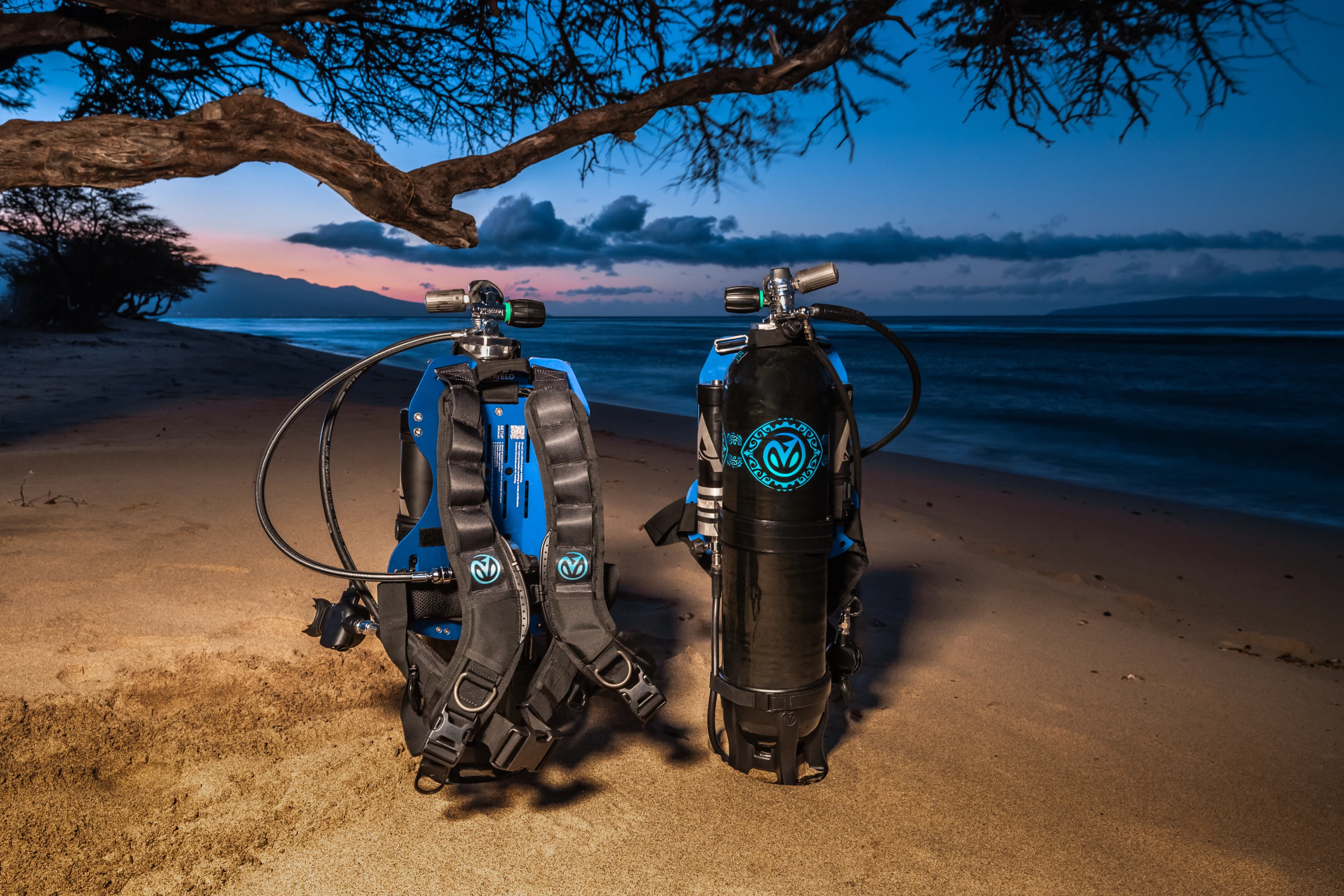Although scuba divers may appear to be "as free as a fish," they're actually loaded down with quite a bit of gear. The Avelo System is designed to help in that regard, as it moves the functionality of the buoyancy compensator into the air tank, making the former unnecessary.
Ordinarily – along with a wetsuit, fins, mask and snorkel – divers wear equipment that includes a compressed air tank, regulator, weight belt and buoyancy compensator device (BCD).
The latter takes the form of a big inflatable yoke-like vest, which is used to maintain neutral buoyancy. If the diver needs to increase their buoyancy, they transfer a bit of air from their tank to the BCD – they decrease their buoyancy by purging air from the BCD into the water.
As an air tank becomes increasingly empty throughout the course of a dive, it becomes more buoyant. Releasing air from the BCD helps divers compensate, although they also require a fair amount of weight on their belt to keep them from popping up to the surface.
The Avelo System is claimed to eliminate the need for a BCD, and to greatly reduce the amount of weights required. It's also said to make maintaining neutral buoyancy much easier.

The setup still incorporates a tank, but that tank consists of a carbon fiber shell with an expandable air bladder inside. An electric pump and purge valve are located to one side of the tank, while a battery is located to the other. All of the components are mounted on a backpack-type platform, as is the case with traditional scuba tanks and BCDs.
Before a dive, the air bladder is filled via a standard compressor, up to a maximum pressure of 4,350 psi (300 bar). At that point, the bladder fills the inside of the tank. Once the diver is in the water and ready to descend, they gradually pump water into the tank. The bladder compresses up to the top of the tank as it's displaced by the water at the bottom – at the same time, the added water makes the tank heavier, and thus less buoyant.
As the dive progresses and the air in the bladder is consumed, the diver simply pumps in more water to offset the increasing buoyancy. On the other hand, if they want to increase their buoyancy, they just purge some of the water from the tank.

Along with its other selling points, the Avelo System is claimed to let divers stay down longer, as some of their air supply isn't being diverted into a BCD. The absence of a BCD should also make them more streamlined, allowing them to move through the water with a bit less effort.
We're told that one charge of the battery should be good for seven to 10 dives by an experienced user, or three to four dives by someone who's still learning. Should the battery run out during a dive, there will reportedly be no immediate effect, although the diver will gradually become more buoyant – at a rate of about 1 lb (0.5 kg) every 15 to 20 minutes – as they consume the air in the tank.
Needless to say, the Avelo System isn't the type of thing that people should just buy and figure out on their own. For that reason, the Avelo company is now inviting interested parties to register for one of its training sessions in Maui, which will take place throughout next year. Commercial availability should follow in 2024 – pricing will be "competitive with standard scuba systems."
There's more information in the video below.
Source: Avelo






